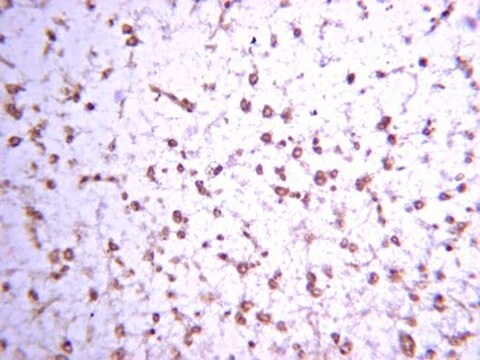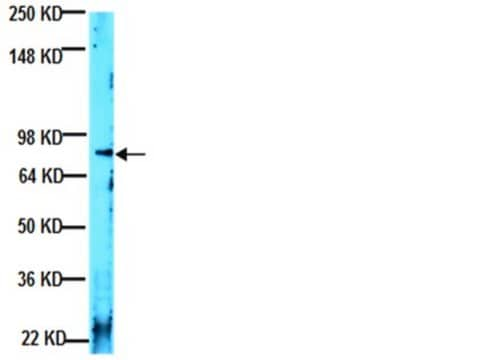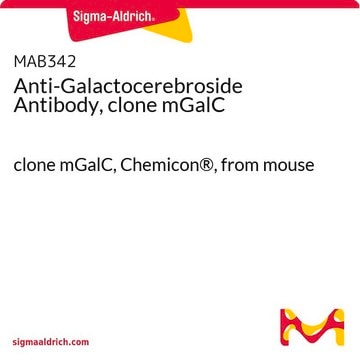MABS1922
Anti-Src-Like-Adaptor 2 (SLA2) Antibody, clone Z30P1F12*F4
clone Z30P1F12*F4, from mouse
Synonim(y):
Modulator of antigen receptor signaling, MARS, Src-like adapter protein 2, SLAP-2
About This Item
Polecane produkty
pochodzenie biologiczne
mouse
Poziom jakości
forma przeciwciała
purified antibody
rodzaj przeciwciała
primary antibodies
klon
Z30P1F12*F4, monoclonal
reaktywność gatunkowa
human
metody
immunohistochemistry: suitable (paraffin)
izotyp
IgG1κ
numer dostępu NCBI
numer dostępu UniProt
Warunki transportu
ambient
docelowa modyfikacja potranslacyjna
unmodified
informacje o genach
human ... SLA2(84174)
Opis ogólny
Specyficzność
Immunogen
Zastosowanie
Signaling
Jakość
Immunohistochemistry Analysis: A 1:250 dilution of this antibody detected Src-Like-Adaptor 2 (SLA2) in human cervical cancer, pancreas, and tonsil tissue.
Opis wartości docelowych
Postać fizyczna
Przechowywanie i stabilność
Inne uwagi
Oświadczenie o zrzeczeniu się odpowiedzialności
Not finding the right product?
Try our Narzędzie selektora produktów.
Kod klasy składowania
12 - Non Combustible Liquids
Klasa zagrożenia wodnego (WGK)
WGK 1
Certyfikaty analizy (CoA)
Poszukaj Certyfikaty analizy (CoA), wpisując numer partii/serii produktów. Numery serii i partii można znaleźć na etykiecie produktu po słowach „seria” lub „partia”.
Masz już ten produkt?
Dokumenty związane z niedawno zakupionymi produktami zostały zamieszczone w Bibliotece dokumentów.
Nasz zespół naukowców ma doświadczenie we wszystkich obszarach badań, w tym w naukach przyrodniczych, materiałoznawstwie, syntezie chemicznej, chromatografii, analityce i wielu innych dziedzinach.
Skontaktuj się z zespołem ds. pomocy technicznej








